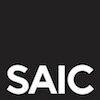Founded in 1855, Michigan State University (MSU) serves around 50,350 students from 142 countries, every state in the United States and every county in Michigan. MSU students have access to more than 200 programs across 17 degree-granting colleges. The College of Arts & Letters, Department of Art, Art History, and Design, offers an MFA that allows students to select a track such as Graphic Design, and a BFA in Graphic Design that offers the unique opportunity for students to gain real-world design experience by offering design services to the community.
The school says “MSU's Design Center in the Department of Art, Art History, and Design works with internal and external clients to effectively communicate the client's messages in a professional manner. From logos to packaging, and brochures to websites, Design Center has worked on a variety of projects, each specifically targeted to address the goal and personality of an individual client.”
Undergraduate students who “exemplify creativity, dedication, and professionalism in the Graphic Design Program” are selected to join the Design Center creative team each year.
Other program highlights include the opportunity to select concentration courses structured to address several career options within the discipline, internship opportunities, AIGA membership, and the Annual Visiting Artist & Scholar Lecture Series. Recent lecturers include Massimo Vignelli, Martin Venezky, Ben Fry, Nancy Skolos & Tom Wedell, James Victore, Andrew Blauvelt, Jim Sherraden of Hatch Showprint, Stuart Bailey, Jan Wilker, Cheryl Towler Weese, Hans Allemann, and Karen Cheng.
Graduates of the Graphic Design Program at MSU hold positions as creative directors, art directors, graphic designers, freelancers, and video editors with design firms, advertising agencies, production companies, publishing companies, and in-house design offices. Career concentrations include identity system, environmental signage and exhibition, magazine and book, web site, software interfaces, film titles and broadcast television graphics, typeface, packaging, poster, corporate branding, and retail design, etc.












